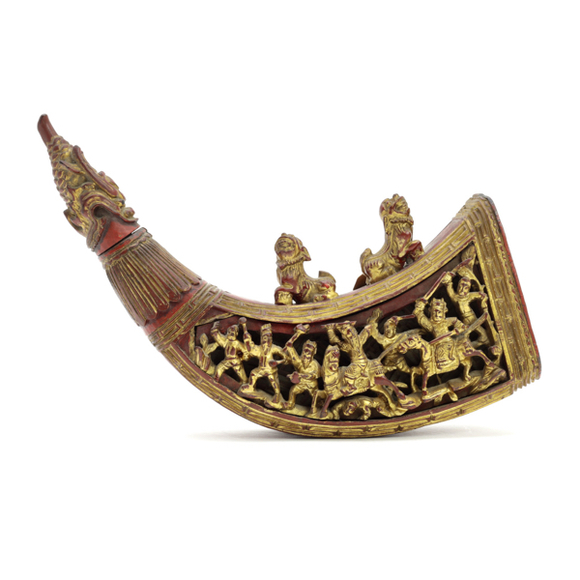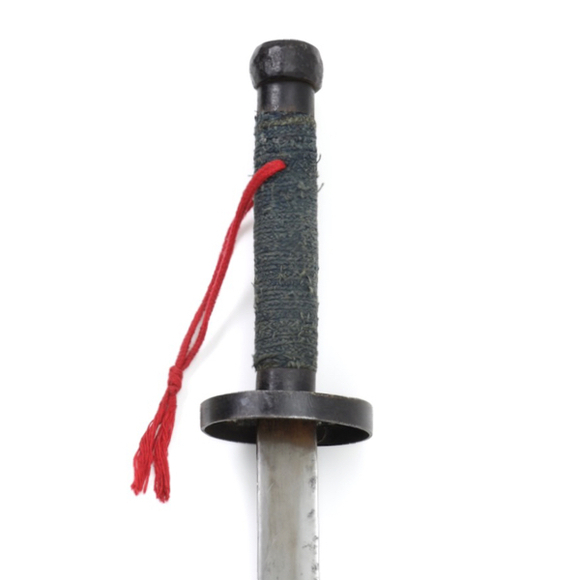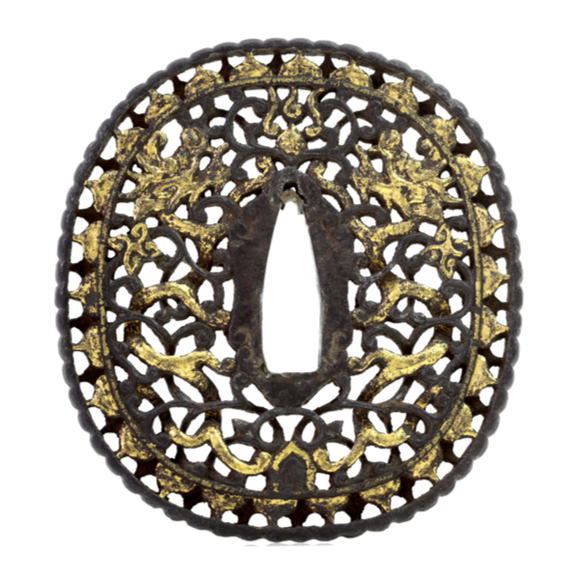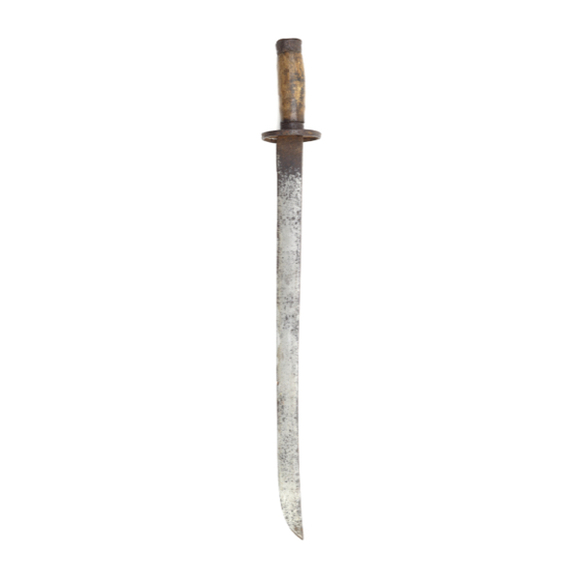Language: Mandarin Chinese
Source: Period records, among others Liùbù Chéngyǔ (六部成语) of 1742
Description
Lìngjiàn (令箭) means "command arrow." It is an oversized arrow with a large broadhead tip. On the tip is painted in vermillion, or overlaid in silver, the character "令" for "command," and it has a flag attached to the shaft with the same character and sometimes additional text.
According to the Liùbù Chéngyǔ (六部成语), a dictionary of official terms for use within the Qing administration:
"All provincial governors and governors-general as well as high-ranking army commanders are given flags and arrows each bearing the word "command". These are used as proof of authority when ordering the transfer [or deployment] of troops." 1
Notes to description
1. E-tu Zen Sun; Ch'ing Administrative Terms, A Translation of The Terminology of the Six Boards with Explanatory Notes. Harvard University Press, 1960. Page 243. For the original Chinese, see 六部成語 at ctext.org.

Early depiction of a Qing command arrow, presented in its silk cover.
From Cài Yùróng nán zhēng tú (蔡毓荣南征图)
Southern tour scroll of Cai Yurong. Circa 1680.

Late Qing command arrow with case.
The case painted with the flags of the Wuchang Uprising of 1911.
Private collection of author.

Command arrow case, number 10.
Described as:
"10 (1775) Quiver of canvas painted red with
dragons in colours, (gold, green, brown
& yellow,) on both sides. Length 34 1/2
inches by 6 inches wide at base. 7/6"
From: Oldman Catalogue of Ethnographical Specimens, September 1905.
In period descriptions
Two types of command arrows appear in the Huangchao liqi tushi (皇朝禮器圖式), below the pages from the 1766 woodblock edition:
Garrison commander, banner commander, and deputy commander command flag.

My translation:
謹按本朝定制駐防將軍都統副都統令旗
Jǐn àn běn cháo dìngzhì Zhùfáng jiāngjūn dū tǒng fù dū tǒng lìng qí
According to the regulations of the dynasty;
Garrison commander, banner commander, and deputy commander command flag.
以緞為之各從纛色皆正幅銷金令字及注銜皆清漢文
yǐ duàn wéi zhī gè cóng dào sè jiē zhèng fú xiāo jīn lìng zì
Each has a colored banner made of satin with a golden "command" written on it in clear Manchu and Chinese.
縿徑一尺五寸五分斿徑九寸五分
jí zhù xián jiē qīng hànwén shān jìng yī chǐ wǔ cùn wǔ fēn
The length is 1 chǐ 5 cùn 5 fēn. (Approx. 54 cm)
The width is 9 cùn 5 fēn. (Approx 33 cm)
貫以令箭笴長三尺髤朱皂羽上括
yóu jìng jiǔ cùn wǔ fēn guàn yǐ lìngjiàn gǎn zhǎng sān chǐ xiū zhū zào yǔ shàng kuò
The flag is attached to a command arrow.
The shaft is 2 chǐ long (approx 105 cm) and lacquered vermillion.
Black feathers, a nock on top.
下鏃鏃面鋄銀令字分十二辰皆清漢文
xià zú zú miàn wàn yín lìng zì fēn shí'èr chén jiē qīng hànwén
Below an iron arrowhead, overlaid with silver text of "command" in Manchu and Chinese.
Green Standard Army provincial military commander and garrison commander command flag.

謹按本朝定制緑營督撫提鎭令旗
Jǐn àn běn cháo dìngzhì lǜ yíng dūfǔ tí zhèn lìng qí
According to the regulations of the dynasty; Green Standard Army provincial military commander and garrison commander command flag.
黄緞為之斜幅縿徑一尺八寸斿徑二尺四寸斜徑三尺
Xié fú shān jìng yī chǐ bā cùn yóu jìng èr chǐ sì cùn xié jìng sān chǐ
Made of yellow satin, the sloping length is 1 chǐ 8 cùn. (Approx 63 cm)
Width is 2 chǐ 4 cùn. (Approx 84 cm)
Length oblique is 3 chǐ. (Approx 105 cm)
餘俱如駐防令旗之制
Yú jù rú zhùfáng lìng qí zhī zhì
The rest of the constructions follows that of the "Garrison commander, banner commander, and deputy commander command flag".
直省總督提督廵撫總兵皆得用
Zhí shěng zǒngdū tídū xún fǔ zǒng bīng jiē dé yòng
Used by the provincial governors, [provincial] military commanders, admirals, and general soldiers.






